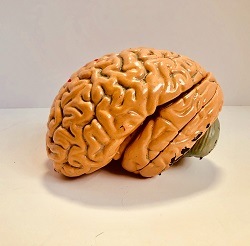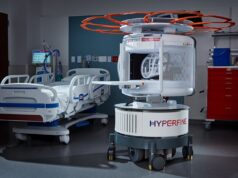 The ongoing annual meeting of the Radiological Society of North America (RSNA; 27 November–1 December 2022, Chicago, USA) has seen a plethora of new research findings presented relating to various brain conditions—including attention-deficit/hyperactivity disorder (ADHD) in children, migraine-related brain disorders and the long-term neurological effects of COVID-19.
The ongoing annual meeting of the Radiological Society of North America (RSNA; 27 November–1 December 2022, Chicago, USA) has seen a plethora of new research findings presented relating to various brain conditions—including attention-deficit/hyperactivity disorder (ADHD) in children, migraine-related brain disorders and the long-term neurological effects of COVID-19.
In one of these studies, researchers analysing the data from magnetic resonance imaging (MRI) exams on nearly 8,000 children identified biomarkers of ADHD, and a possible role for neuroimaging machine learning to help with the diagnosis, treatment planning and surveillance of the disorder.
“There is a need for a more objective methodology for a more efficient and reliable diagnosis,” said study co-author Huang Lin (Yale School of Medicine, New Haven, USA). “ADHD symptoms are often undiagnosed or misdiagnosed because the evaluation is subjective.”
The researchers used MRI data from the ABCD (Adolescent brain cognitive development) study—claimed to be the largest long-term study of brain development and child health in the USA, involving 11,878 children aged 9–10 years from 21 centres across the country.
“The demographics of our group mirror the US population, making our results clinically applicable to the general population,” Lin added.
After exclusions, Lin’s study group included 7,805 patients, including 1,798 diagnosed with ADHD, all of whom underwent structural MRI scans, diffusion tensor imaging and resting-state functional MRI. The researchers performed a statistical analysis of the imaging data to determine the association of ADHD with neuroimaging metrics including brain volume, surface area, white matter integrity and functional connectivity.
“We found changes in almost all the regions of the brain we investigated,” Lin said. “The pervasiveness throughout the whole brain was surprising, since many prior studies have identified changes in selective regions of the brain.”
In the patients with ADHD, the researchers observed abnormal connectivity in the brain networks involved in memory processing and auditory processing, a thinning of the brain cortex, and significant white matter microstructural changes—especially in the frontal lobe of the brain.
“The frontal lobe is the area of the brain involved in governing impulsivity and attention, or lack thereof—two of the leading symptoms of ADHD,” Lin stated.
Lin also said that MRI data were significant enough that they could be used as input for machine learning models to predict an ADHD diagnosis, adding: “Our study underscores that ADHD is a neurological disorder with neuro-structural and functional manifestations in the brain, not just a purely externalised behaviour syndrome.”
She further stated that the population-level data from the study offer reassurance that the MRI biomarkers give a solid picture of the brain.
“At times when a clinical diagnosis is in doubt, objective brain MRI scans can help to clearly identify affected children,” Lin continued. “Objective MRI biomarkers can be used for decision-making in ADHD diagnosis, treatment planning and treatment monitoring.”
Senior author Sam Payabvash, also of Yale School of Medicine, noted that recent trials have reported microstructural changes in response to therapy among ADHD children, stating: “Our study provides novel and multimodal neuroimaging biomarkers as potential therapeutic targets in these children.”
Migraine brain changes
Another new study presented at RSNA 2022 identified enlarged perivascular spaces in the brains of migraine sufferers—the first time this has been achieved, according to the researchers involved.
“In people with chronic migraine and episodic migraine without aura, there are significant changes in the perivascular spaces of a brain region called the centrum semiovale,” said study co-author Wilson Xu (University of Southern California, Los Angeles, USA). “These changes have never been reported before.
“Perivascular spaces are part of a fluid clearance system in the brain. Studying how they contribute to migraine could help us better understand the complexities of how migraines occur.”
Xu and colleagues set out to determine the association between migraine and enlarged perivascular spaces, using ultra-high field 7T MRI to compare structural microvascular changes in different types of migraine.
“To our knowledge, this is first study using ultra-high-resolution MRI to study microvascular changes in the brain due to migraine, particularly in perivascular spaces,” Xu added. “Because 7T MRI is able to create images of the brain with much higher resolution and better quality than other MRI types, it can be used to demonstrate much smaller changes that happen in brain tissue after a migraine.”
Study participants included 10 with chronic migraine, 10 with episodic migraine without aura, and five age-matched healthy controls. All patients were between 25 and 60 years old. Patients with overt cognitive impairment, brain tumour, prior intracranial surgery, MRI contraindications and claustrophobia were excluded from the study.
The researchers calculated enlarged perivascular spaces in the centrum semiovale and basal ganglia areas of the brain. White matter hyperintensities—lesions that ‘light up’ on MRI—were measured using the Fazekas scale. Cerebral microbleeds were rated with the microbleed anatomical rating scale. The researchers also collected clinical data, such as disease duration and severity; symptoms at time of scan; presence of aura; and side of headache.
Statistical analysis revealed that the number of enlarged perivascular spaces in the centrum semiovale was significantly higher in patients with migraine compared to healthy controls. In addition, enlarged perivascular space quantity in the centrum semiovale correlated with deep white matter hyperintensity severity in migraine patients.
“We studied chronic migraine and episodic migraine without aura and found that, for both types of migraine, perivascular spaces were bigger in the centrum semiovale,” Xu said. “Although we did not find any significant changes in the severity of white matter lesions in patients with and without migraine, these white matter lesions were significantly linked to the presence of enlarged perivascular spaces. This suggests that changes in perivascular spaces could lead to future development of more white matter lesions.”
The researchers hypothesise that significant differences in the perivascular spaces in patients with migraine compared to the healthy controls might be suggestive of glymphatic disruption within the brain. However, whether such changes affect migraine development or result from migraine is unknown, and continued study with larger case populations and longitudinal follow-up will better establish the relationship between structural changes, and migraine development and type, they note.
“The results of our study could help inspire future, larger-scale studies to continue investigating how changes in the brain’s microscopic vessels and blood supply contribute to different migraine types,” Xu concluded. “Eventually, this could help us develop new, personalised ways to diagnose and treat migraine.”
Brain abnormalities post-COVID
Using a special type of MRI, researchers uncovered brain changes in patients up to six months after they recovered from COVID-19, according to a further study presented at the annual meeting of the RSNA. For this study, said researchers used susceptibility-weighted imaging to analyse the effects that COVID-19 has on the brain.
“Group-level studies have not previously focused on COVID-19 changes in magnetic susceptibility of the brain despite several case reports signalling such abnormalities,” said study co-author Sapna Mishra (Indian Institute of Technology, Delhi, India). “Our study highlights this new aspect of the neurological effects of COVID-19 and reports significant abnormalities in COVID survivors.”
The researchers analysed the susceptibility-weighted imaging data of 46 COVID-recovered patients and 30 healthy controls. Imaging was done within six months of recovery. Among patients with long COVID, the most commonly reported symptoms were fatigue, trouble sleeping, lack of attention and memory issues.
“Changes in susceptibility values of brain regions may be indicative of local compositional changes,” Mishra added. “Susceptibilities may reflect the presence of abnormal quantities of paramagnetic compounds, whereas lower susceptibility could be caused by abnormalities like calcification or lack of paramagnetic molecules containing iron.”
MRI results showed that patients who recovered from COVID-19 had significantly higher susceptibility values in the frontal lobe and brain stem compared to healthy controls. The clusters obtained in the frontal lobe primarily show differences in the white matter. According to Mishra, these brain regions are linked with fatigue, insomnia, anxiety, depression, headaches and cognitive problems.
Portions of the left orbital-inferior frontal gyrus and right orbital-inferior frontal gyrus, and the adjacent white matter areas, made up the frontal lobe clusters. The researchers also found a significant difference in the right ventral diencephalon region of the brain stem—a region that is associated with many crucial bodily functions, including coordinating with the endocrine system to release hormones, relaying sensory and motor signals to the cerebral cortex, and regulating circadian rhythms (the sleep-wake cycle).
“This study points to serious long-term complications that may be caused by the coronavirus, even months after recovery from the infection,” Mishra said. “The present findings are from the small temporal window. However, the longitudinal time points across a couple of years will elucidate if there exists any permanent change.”
The researchers are also conducting a longitudinal study on the same patient cohort to determine whether these brain abnormalities persist over a longer time frame.












